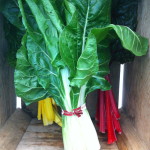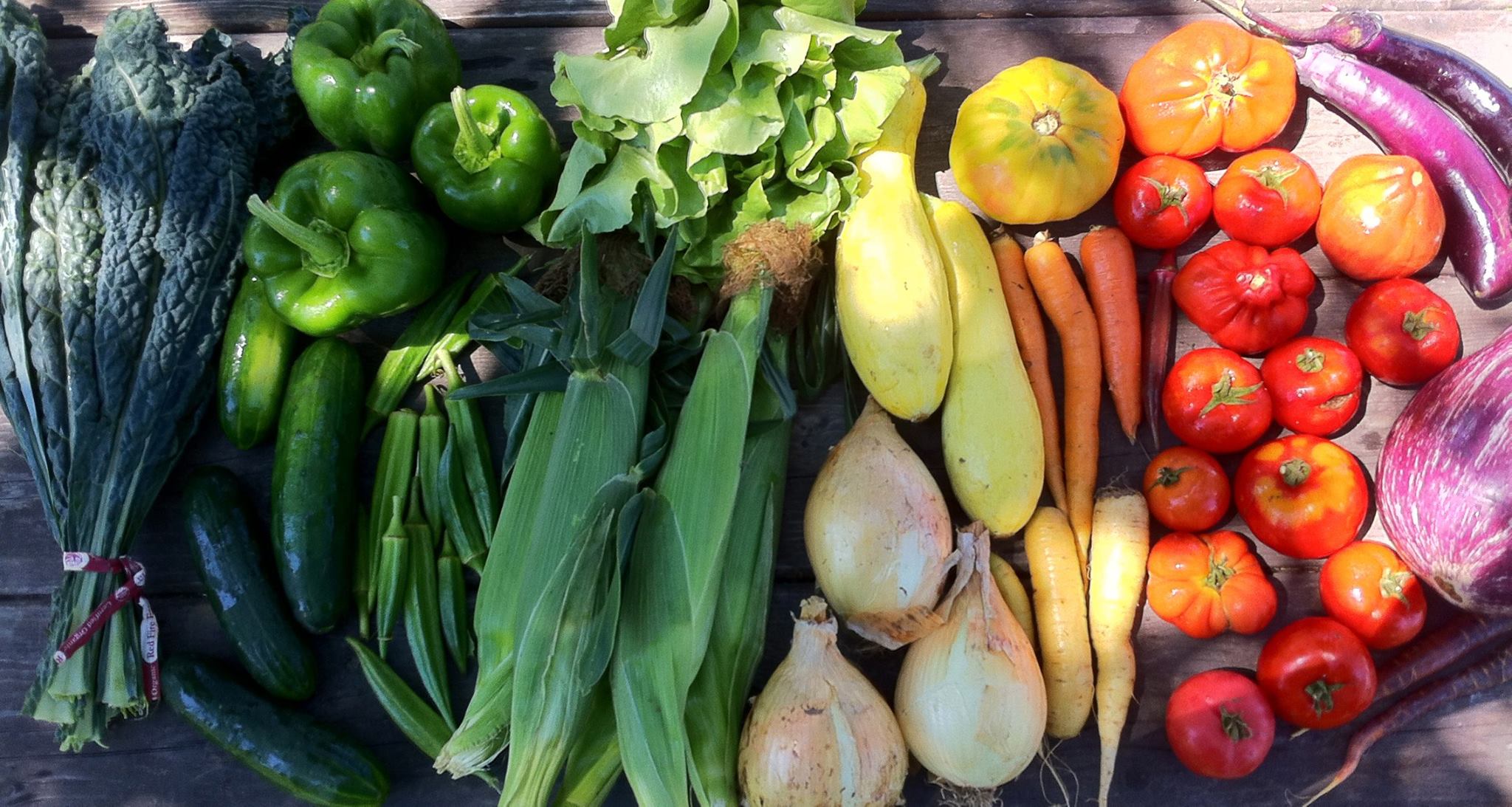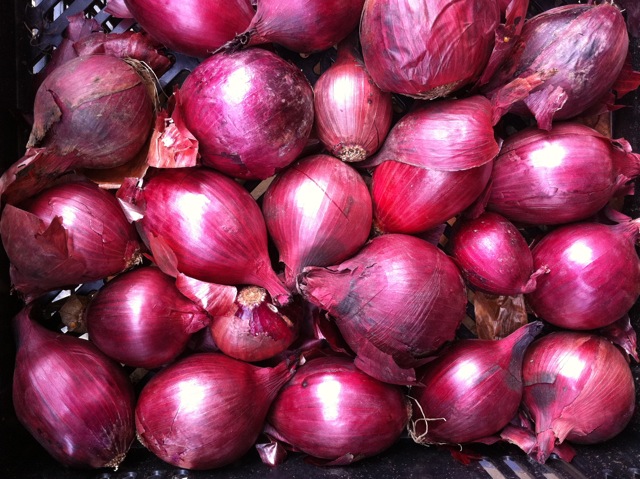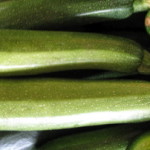
The Basics
We grow successions of these throughout the summer to keep you in good supply. The earliest batches are raised under floating row cover to warm the plants and get the earliest crops.
There might be some fun/wild varieties as the season progresses, including stripes and different shapes.
Cooking Tips
Grilled summer squash or zucchini make an excellent addition to pizza or pasta sauce.
Layering zucchini with thinly sliced potatoes and fresh pesto is a simple baked side dish.
Storage Tips
Can be left on a cool countertop wrapped loosely in cloth, or placed in fridge to extend shelf life up to one week. Even if limp, summer squash can be roasted, fried, or sauteed.
Frozen zucchini will last for up to 10 months. Shred and store in serving-size portions.
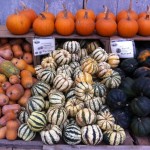
The Basics
We grow a wide array of winter squash at the farm. You’ll find Delicata, Butternut, Honeynut, Acorn, Sweet Dumpling, Kabocha, Buttercup, Spaghetti, Sunshine, and Carnival squashes at our stands and markets over the fall season, as well as pie pumpkins and carving pumpkins. Each has different flavors, textures and storing abilities.
Cooking Tips
All are easy to bake and top with butter or olive oil and salt for a simple recipe. Just cut them in half, remove the seeds, and put them on a baking tray in an oven at 375 until the flesh is easy to poke into with a fork. The seeds of all the squashes can be baked and eaten separately if you’d like.
Baking your Winter Squash Seeds: All winter squash varieties have edible seeds that you can bake like pumpkin seeds. So if you’re baking your squash, bake the seeds too for an appetizer. Just scoop them out, pick out any pulp remaining from the squash, mix seeds with some oil and flavorings, like soy sauce and cayenne, and bake them spread on a cookie sheet, stirring occasionally, until crisp and golden brown. You can cook them in the oven at whatever temperature you’re baking your squash, just keep an eye on them as they’ll cook faster at high heats.
Pie pumpkins are not your regular jack’o’lanterns. While you can decorate with them, don’t forget to eat them too! It’s best not to cut them into jack’o’lanterns if you want to eat them, as the cut open parts can get disease. We select these pumpkin varieties for great flavor.
Pie pumpkins are delicious roasted in the oven, and mashed with butter salt and pepper. A tasty addition to soups, and stir fries too. Use anywhere you would winter squash – though pumpkin isn’t usually as sweet as some of the winter squash varieties.
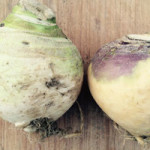
The Basics
We grow a selection of turnip varieties, including Scarlet, Purple Top, and Gold. Scarlet turnips have a bright pink skin and pink skin the middle of white fresh.
The rutabaga is a root vegetable that looks very much like a turnip, with a creamy skin and its own flavor. We grow the classic type of rutabaga with cream colored flesh and purple blush on the skin
Gilfeather turnips are actually a hybrid turnip and rutabaga. A selection on the Slow Food Ark of Taste, Gilfeather turnips were developed by Mr. John Gilfeather in Vermont. They have whiter flesh and does not have the purple blush on the skin.
Cooking Tips
Try them raw, roasted, boiled, steamed, stir-fried, mashed, or stewed. High in vitamins A and C, and some minerals, especially calcium.
Storage Tips
Turnips and rutabagas store very well and can last up to a month or more in a plastic bag in the refrigerator.
Also known as Tokyo or Japanese turnips, Hakurei turnips are white and tender, sweet and slightly spicy. This is one of the first spring crops we harvest that isn’t lettuce, kale, or other greens. We like to call Hakurei “the white knight of spring,” here to brighten up our meals after a long, dark winter.
Cooking Tips
You don’t need to peel them. You can eat BOTH the greens and roots raw in salads or sandwiches, or saute them quickly with a miso glaze and anything else you like. Try the turnips sliced and served with dip, or lightly pickled with rice vinegar and a touch of salt and sugar.
Storage Tips
Wrap loosely in a plastic bag and refrigerate for up to a week. Trim greens and store in a separate bag for up to 3 days. Roots can last a good bit longer refrigerated.
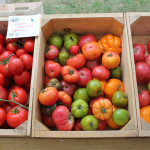
The Basics
We grow a huge variety of tomatoes, over 100 types! From juicy heirlooms to red slicers to a rainbow of cherry tomatoes, you’ll be amazed at the variety of hues and flavors on display at our farm stands.
Our heirloom types vary widely in shape, size, and color. Sample varieties include small Green Zebras, enormous Watermelon Beefsteak or Paul Robesons, and Pink Beauties.
We also grow several varieties of paste tomatoes, which make excellent sauces and preserves. Try making your own sauces for pasta, barbecues, enchiladas, and more.
Cherry tomatoes are available for members to pick their own at our farm locations. Eat them plain, chopped in salsa, or roasted in the oven.
Our red slicing tomatoes are amazing on sandwiches and chopped in salads. Also a great variety for salsa.
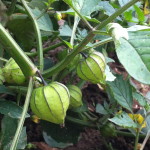
The Basics
In the tomato family, tomatillos are the bright green cousins. They come in a papery husk that they fill and often split open when ripe and ready to use. If you pick your own, wait to pick until the husk is tight around the fruit and splitting at the bottom.
Cooking Tips
These tangy fruits are perfect salsa ingredients, and are the primary ingredient in salsa verde with jalapenos. Roasting tomatillos brings out their sweetness and adds a great depth of flavor.
Tomatillos are available for members to pick their own at our farm locations.
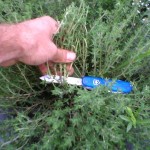
The Basics
Thyme is a resilient herb that retains its flavor well even after drying or freezing. It is one of the traditional herbs de Provence, an herb blend from the south of France (along with marjoram, oregano, sage, savory, and rosemary).
Cooking Tips
Some favorite pairings for thyme are mushrooms, onions, cheeses, citrus, winter squash, and tomatoes.
Its warm aromatic flavor makes a wonderful tea just by itself as well, just boil some sprigs, either fresh or dried, in water for a few minutes and then sip away. Sweeten with honey if you like.
Most culinary herbs also have medicinal value, and thyme is no exception. It has been used for boosting the immune system, as a digestive aid and more.

The Basics
The local fruit of June… This delicious red berry marks the beginning of summer and our CSA for us at the farm. We typically grow over 15 varieties, each with their own flavor. A few are special early types that we care for using row covers, plasticulture, and planting techniques, and we hope these yield some time in May. Then we get into the June-bearing varieties that ripen in cascades. We try to select varieties that will cover the longest season with the best flavors.
Cooking Tips
The first berries of the season usually get eaten straight up, but there are many wonderful things you can make and cook with them too. Dip them in melted chocolate. Make jam. Try the recipe in the Pomona’s Pectin box for making jam with honey. Slice onto salad with a balsamic dressing. Don’t forget strawberry shortcake with fresh whupped cream!
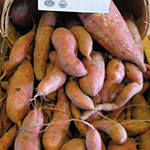
The Basics
We grow a majority of the Beauregard variety of sweet potatoes with their delicious orange flesh, a white type called O’Henry, and a purple-skinned variety called Japanese White. Packed with vitamin A, vitamin C and manganese, sweet potatoes are also a good source of B6 and potassium, among other nutrients.
Cooking Tips
Sweet potatoes come in all sizes, from almost a loaf of bread to skinny little potato fingers. The skinny ones bake quickly, or chop up larger ones into little circles for stir frys or homefries. No need to peel any of them, just wash and chop – the delicate skins are delicious. Sweet potato homefries are a great alternative to greasy French fries. Slice the potato into strips (like fries), then mix with oil, salt and pepper. Broil until crispy.
Bake sweet potatoes at 375-400 degrees F for 30 min to an hour. When they give in easily to the tines of a fork, they’re ready. You can also slice them thin and saute for a quicker cooking time. Nice with onions and soy sauce.











